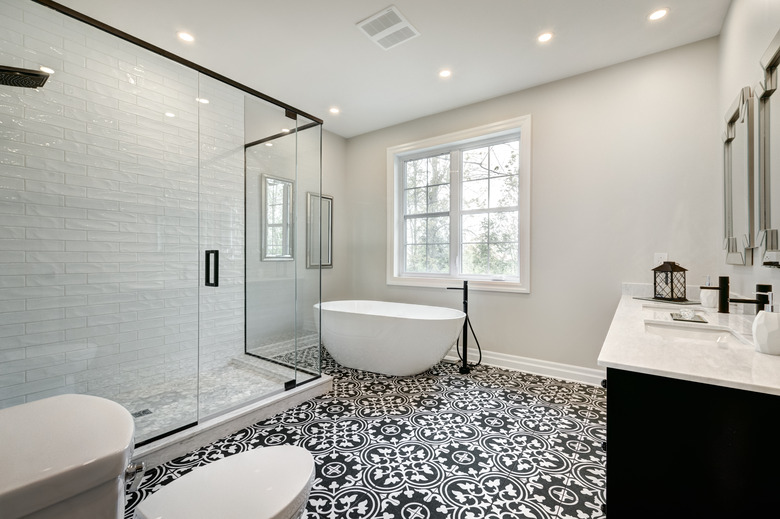Bubbles On The Bathroom Ceiling
We may receive a commission on purchases made from links.
What's behind ceiling bubbles, which form when paint film separates from an underlying surface? Excessive heat and moisture are generally to blame. First, understand how the bubbles form in the paint before you address the problem.
Is it indeed, caused by humidity? Or perhaps you applied oil-based or alkyd paint over latex paint — another reason why bubbles may show up on the ceiling. Either way, simply repainting the ceiling or ignoring the bubbles can lead to more problems. Once you address the source of the issue, you can then fix the damage to the paint.
Bubbles From Humidity
Bubbles From Humidity
Your bathroom may have more humidity in it than any other room in your house. The humidity levels rise as someone takes a bath or hot shower, sending water into the air that fogs up the mirror and leads to condensation on the walls and ceiling.
As the water condenses on the ceiling, it may pass through the paint and hit the drywall. Once the moisture has entered the drywall, it can form a barrier between the drywall and the paint itself, meaning the paint no longer adheres as well as it should. The result of the moisture penetration is bubbles in the paint on the ceiling.
Ceiling Bubble Health Concerns
Ceiling Bubble Health Concerns
Bubbling paint on your bathroom's ceiling can lead to or indicate the possibility of some health risks for anyone who uses your bathroom. If the humidity levels in your bathroom are high enough to cause the ceiling paint to bubble, then the humidity also may lead to mold growing on various surfaces in your bathroom, including the ceiling and the grout between the tiles.
As the paint bubbles more it can start to crack and fall onto any surfaces below, which also may lead to paint dust entering the air in the bathroom. According to the Centers for Disease Control and Prevention, if your home was built before 1978, the paint on your bathroom's ceiling may contain lead, which is toxic if you breathe or ingest it.
Getting Proper Ventilation
Getting Proper Ventilation
Properly ventilating your bathroom decreases the amount of humidity in the air and helps prevent bubbles forming in the paint. You may open a window once you are done bathing or taking a shower in the bathroom, which helps transport some of the moisture in the air out of the bathroom, but condensation still may form on the ceiling.
A bathroom exhaust fan actively pulls the air in the bathroom out through an air duct and to the outside through a vent in the roof. Run the bathroom's fan while you are taking a shower or bath to keep the humidity levels low and help avoid the formation of condensation on the ceiling.
How to Repair Your Ceiling
How to Repair Your Ceiling
First solve the problem of poor ventilation in your bathroom before you repair the bubbles in the ceiling. Otherwise the bubbles will form again and the repair will be ruined.
Scrape off any loose portions of the ceiling paint using a putty knife. Apply spackle to the damaged portions of the ceiling, smoothing them out with a putty knife until they sit flush with the surrounding portions of the ceiling. Once the spackle dries, sand it down with fine grit sandpaper, and then apply fresh primer and then paint. If you're unsure of the source of the bubbles, consult a professional.
